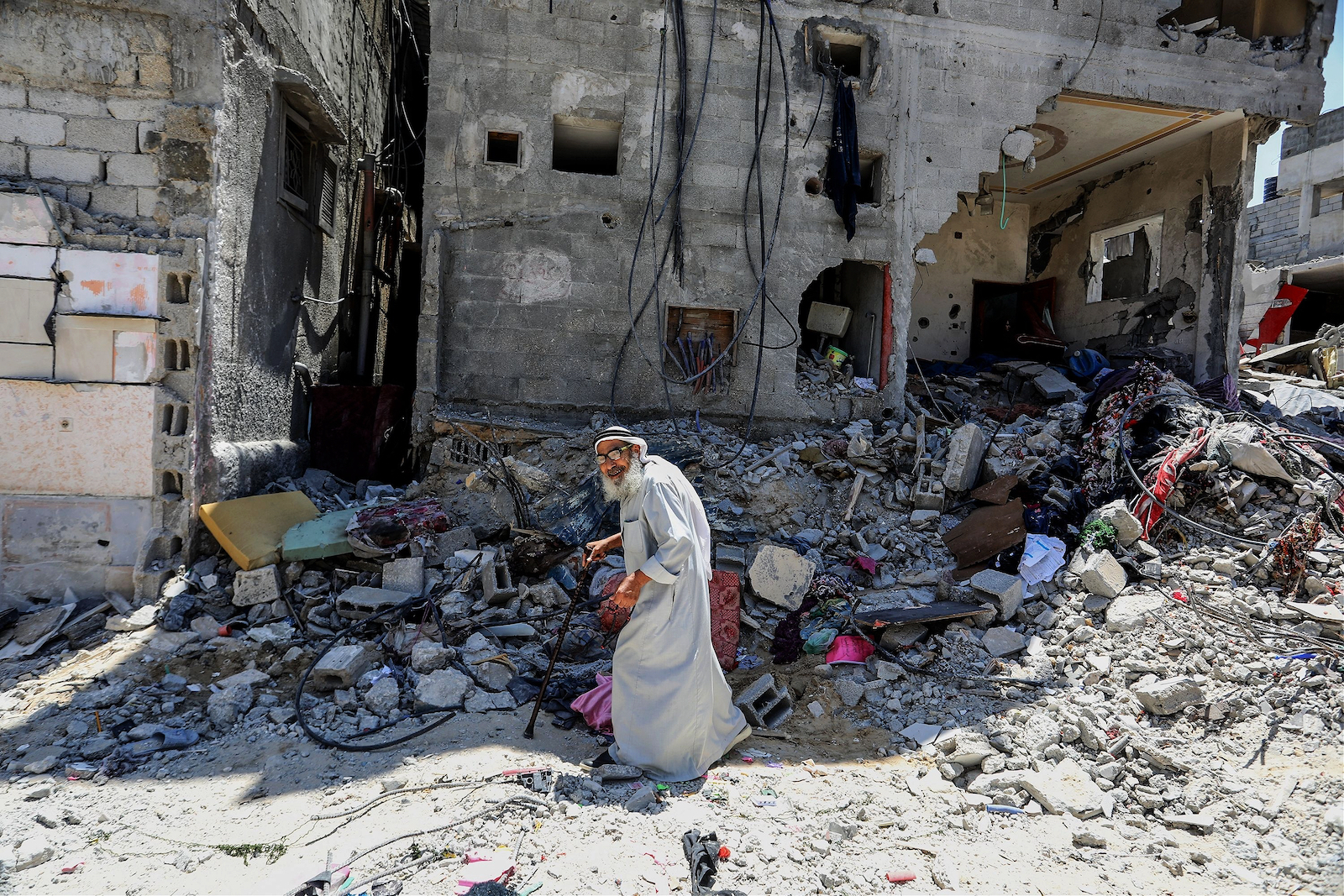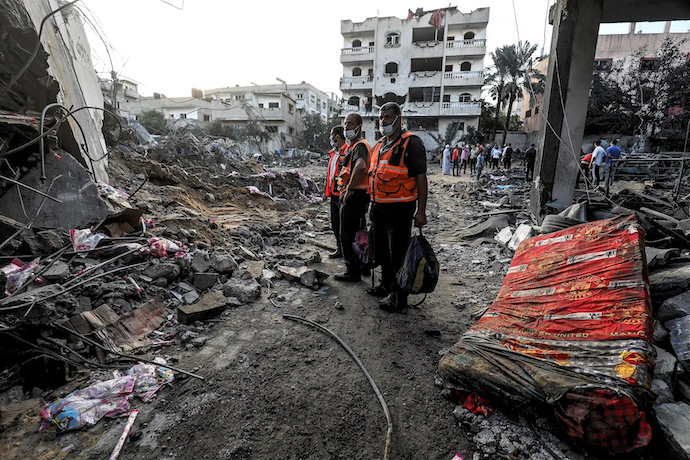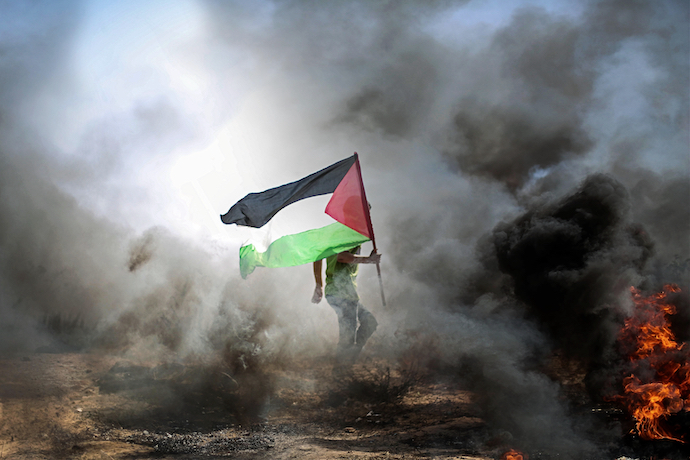
Given the Risks, What was Hamas’s Motivation?
On October 7, Hamas militants, under the cover of a rocket barrage, 5,000 according to Hamas, 3,000 per Israeli reports, attacked Israel by land, by sea, and the novel use of paragliders. They crashed through Israel’s border fence and attacked several communities and a military outpost near the Gaza Strip, driving as far as 22 kilometers into Israel.
Hamas killed roughly 1,200 people of all ages, in particular, people attending a music festival, and kidnapped over 240 Israelis and foreign citizens to be used to bargain for the release of Palestinian prisoners held in Israeli prisons. With a nod to Egypt’s and Syria’s combined attack that had launched the Yom Kippur War in 1973, Hamas attacked one day after the fiftieth anniversary of the war and on the convergence of three Jewish holy days: Shemini Atseret and Simhat Torah, and Shabbat.
The dispatch with which Hamas attacked testifies to Israel’s state of unpreparedness, but, more importantly, to Hamas’s careful planning, its intelligence gathering and analytical capabilities, and to it how intends to wage permanent war to destroy Israel, an objective affirmed by Khalil al-Hayya of the Hamas politburo in Doha. Conflict between Hamas and Israel has been ongoing at various levels of intensity for over three decades. This attack by Hamas differed from any previous attack and lays bare what motivates and shapes Hamas’s actions.
Hamas began as merely one of many factions jostling for influence within the fractious landscape of Palestinian politics. Its primary struggle was not the overtly stated objective to see Israel’s destruction and establish an Islamic state, but rather to secure its own survival and expand its base of support. Once Israel had withdrawn unilaterally from the Gaza Strip in 2005, Hamas began to eliminate Palestinian opposition and, by 2007, Hamas had realized this objective.

Yet, while pursuing its military goals it had the burden of managing the affairs of a statelet, including the delivery of goods and services to its populace. This latter responsibility was made difficult by tight Egyptian and Israeli control of its land borders, its coastline, and its airspace in response to Hamas’s stated goals and acting frequently on them by attacking Israel and maintaining close ties to the Muslim Brotherhood, a group Egypt regards as an internal security threat. Hamas was, and remains, dependent on foreign support to execute both of its aforementioned tasks. Qatar, which, for domestic and international reasons, has sought to become a key international player by nurturing relations with antagonistic states and factions, became the source for financing the day-to-day operations of the Gaza Strip under Hamas. For the maintenance of its war with Israel, Hamas has reaped funds from investments, the misuse of charitable donations, and support from Iran, which has made Hamas a unique and useful beneficiary of its largess.
As I discussed in “Iran’s Obsession with Its Imperial Past and Israel,” today’s Iran pursues its centuries-old imperial imperatives of direct or indirect control of the land mass from its western borders across the Fertile Crescent to the Mediterranean Sea. Its concern for its exposed southern flank and shipping through the Red Sea demands security in the Persian Gulf and an ally on the coast of Bab al-Mandab. To realize such objectives far beyond its frontiers, Iran gains influence by supporting armed Shiite factions in Afghanistan, Bahrain, Iraq, Lebanon, Pakistan, Saudi Arabia, Syria, and Yemen.
Hamas, as a Sunni force, stands apart. It is a key proxy to realize Iran’s over four-decade-old goal to destroy Israel. Hamas relieves considerable pressure on Hezbollah, Iran’s Shiite proxy in Lebanon, from Israel at the expense of no Shiite lives. Hamas knows and accepts the possibility of sanctions from Iran, as was the case when Hamas sent fighters to Syria in the past decade to aid Sunni factions in the ongoing Syrian civil war. As a recipient of Iran’s patronage, Hamas is obligated to sustain a level of conflict that ensures that its patron’s investment yields dividends. This has led to a persistent pattern of provocations along Israel’s borders, calculated to elicit Israeli responses that attract international censure and, by extension, garner Hamas foreign sympathy and support.
For the past year and a half, the global narrative has been dominated by Russia’s war in Ukraine and the country’s tenacious resistance. Israel’s recent establishment of diplomatic relations with four more Arab states, now bringing the total to six, Bahrain, Egypt, Jordan, Morocco, Sudan, and the United Arab Emirates, as well as working relations with several others induced by trade advantages and the common threat of Iran, increased concerns for Hamas, as such developments portended waning interest in the Israeli-Palestinian conflict. The looming possibility of Israel’s diplomatic relations with Saudi Arabia produced greater angst for Hamas of being ignored by the Arab states. Likewise, the intensity of Israel’s internal political strife had eclipsed Israel’s interest in Hamas. Hamas needed Israel’s and the world’s attention.
One more round of demonstrations at the border, launching kites with incendiary bombs, or missile attacks, followed by subsequent Israeli shelling, aerial bombing, and land action would not serve this purpose. Hamas’s investment in a force of between 20,000 and 40,000 armed and disciplined fighters, a competent intelligence apparatus, a strong supply of weapons and rockets, and an excellent system of tunnels, underground arms magazines, storage centers, command headquarters, military staging points, troop shelters, and holding facilities for prisoners would not be justified unless the resources were to be used to their full potential.

Moussa Abu Marzouk, a member of Hamas’s politburo, stated at the end of this past October that the 500-kilometer expanse of tunnels is only for Hamas’s fighters and not for the protection of civilians. Hamas, unrestrained by having to answer to an electorate or any active form of civil society, was free to act in a manner that would ensure a massive Israeli response and massive suffering by the people of the Gaza Strip. Hamas has met this objective. In the aforementioned interview, Khalil al-Hayya stated, “We have succeeded in putting the Palestine issue back in the table, and now no one in the region is experiencing calm.”
The war in the Gaza Strip has been the focus of the international news media’s attention and worldwide demonstrations condemning Israel and calling for Israel’s destruction, bearing slogans such as “From the river to the sea, Palestine will be free,” bear this out. Likewise, for Hamas, the high death count of civilians, which, to date, has reached well over 11,000, and the people’s hardships are a weapon. Just as the tunnels are not for the protection of civilians, Mousa Abu Marzook, a senior member of Hamas, holds that Israel and the United Nations, not Hamas, are responsible for Gazans’ protection.
Hamas knew that Israel would respond with a ground war to liberate the hostages and eliminate Hamas’s capabilities to fight. Hamas, with its warren of underground facilities stationed under residences, schools, hospitals, and mosques, would have the territorial advantage and could use the proximity of civilians to hold in check the Israel Defense Forces superiority in weaponry and tanks. Likewise, by forcing the battles to take place in highly populated areas, Israel would bear the burden in the world press of high civilian casualties and the destruction of urban centers, something that would put Israel at a further disadvantage as it would endeavor to eschew both. The gains from such a form of combat, although they occasion high casualties amongst its own combatants and civilians, are worth the price if Hamas can meet the following objectives, some of which it has accomplished already.
Hamas has the attention of Israel, the Palestinian leadership in the West Bank, the Arab states, and the entire world. Hamas has shown Iran that it is receiving a return on its investment by having started a complicated war for Israel and by having distracted Israel from Hezbollah and from other Iranian Shiite proxies in Lebanon and Syria. Although a battlefield victory cannot be achieved, Hamas’s strategy is to cause enough civilian deaths and destruction of homes and critical infrastructure to force world opinion to coerce Israel into a ceasefire before Israel has achieved its objectives of freeing the hostages and destroying Hamas’s underground facilities and its power to threaten individuals and cities in Israel. Hamas’s overriding goal in the present war is to survive, cost whatever it may to the Gazans and Hamas itself, so as to claim victory over Israel for having survived.
Hamas is not a national liberation movement; its cause is different. In an interview last month on 24 October, Hamas politburo member Ghazi Hamad said, “We must remove that country [Israel] because it constitutes a security and political catastrophe to the Arab and Islamic nation, and it must be finished.”
Hamas sees itself as obeying an Islamic imperative to remove Israel, the Jewish polity, from the center of Dar al-Islam, the center of historic Islamic rule. The added vehemence of this imperative is that any Jews who reside in that realm are expected to behave as dhimmis, a subject people with rights circumscribed by Islamic law and the degree of usefulness that they might have to an Islamic polity. For Hamas, the struggle to eliminate Israel is a jihad, a divine duty for all Muslims.
Hamad, in the aforementioned interview, stated “We are a nation of martyrs and are proud to sacrifice martyrs.” The risk of combat with a far superior military force is one that Hamas assumes readily. For Hamas, the present war is but a momentary episode in a war of decades, if not centuries.

